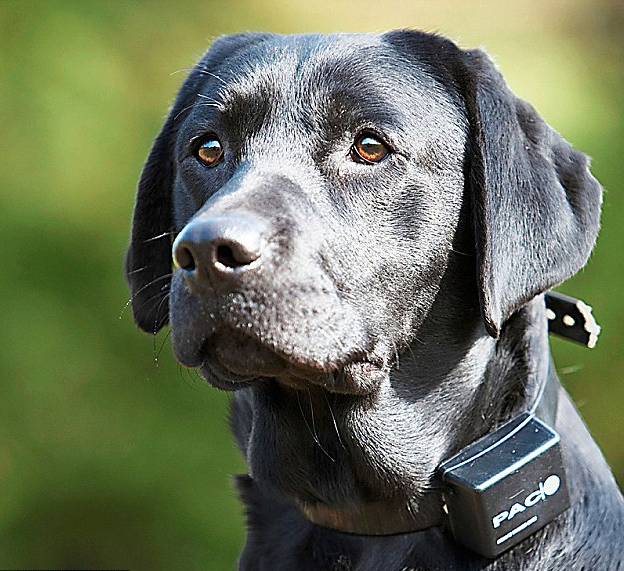Dog Obedience Training:
The Pros and Cons of E-Collars
Collar Dog Training Corpus Christi: Pros
E-collars, also known as electric collars, are devices designed to provide an electric stimulus to a dog's neck when activated by a remote control or if designed to go off automatically when they bark. They are a subject of debate among dog owners and trainers due to their controversial nature because they are accompanied by advantages, disadvantages, and ethical concerns.
Those in support of these devices argue that they can be efficient tools for training certain behaviors; they offer immediate correction, which some believe helps dogs associate undesirable behavior with a negative consequence, leading to faster learning. The ability to remotely deliver a correction allows trainers to address behavior issues from a distance. This feature is useful in reinforcing commands like "Recall" or deterring certain behaviors without physical intervention or if the dog is too far away to apply discipline in the appropriate amount of time for them to correlate cause and effect.
Specificity in correction: e-collars offer different levels of stimulation, allowing trainers to adjust the intensity according to the dog's size and temperament which could allow more controlled and personalized training sessions. Advocates suggest that compared to other training methods, e-collars can yield quicker results in curbing specific behaviors such as excessive barking or chasing. When used correctly, the argument is sometimes made that modern e-collars have safety features to prevent overstimulation, making them less harmful than older versions and it is proposed that proper training and supervision minimize risks.
Speak With A Dog
Training Expert
Speak With A Dog Training Expert
Thank you for contacting us!
We will contact you shortly!
Please try again later.
Collar Dog Training Corpus Christi: Pros
E-collars, also known as electronic collars, are devices designed to provide an electric stimulus to a dog's neck when activated by a remote control or if designed to go off automatically when they bark. They are a subject of debate among dog owners and trainers due to their controversial nature because they are accompanied by advantages, disadvantages, and ethical concerns.
Those in support of these devices argue that they can be efficient tools for training certain behaviors; they offer immediate correction, which some believe helps dogs associate undesirable behavior with a negative consequence, leading to faster learning. The ability to remotely deliver a correction allows trainers to address behavior issues from a distance. This feature is useful in reinforcing commands like "Recall" or deterring certain behaviors without physical intervention or if the dog is too far away to apply discipline in the appropriate amount of time for them to correlate cause and effect.
Speak With A Dog
Training Expert
Speak With A Dog Training Expert
Thank you for contacting us!
We will contact you shortly!
Please try again later.
Specificity in correction: e-collars offer different levels of stimulation, allowing trainers to adjust the intensity according to the dog's size and temperament which could allow more controlled and personalized training sessions. Advocates suggest that compared to other training methods, e-collars can yield quicker results in curbing specific behaviors such as excessive barking or chasing. When used correctly, the argument is sometimes made that modern e-collars have safety features to prevent overstimulation, making them less harmful than older versions and it is proposed that proper training and supervision minimize risks.
Cons: Food for Thought From a Dog Obedience Trainer
Critics discuss the potential risk for physical harm caused by e-collars such as burns and psychological stress caused by improper use, high-intensity settings, and/or prolonged exposure. Contrary to the original goal of improving their behavior, continuous exposure can create negative associations with specific environments or people leading to fear, anxiety, or aggression in dogs and resulting in long-term behavioral issues.
Unfortunately, it's imperative to note that e-collars may come with a lack of understanding for your dog. The collars may not address the root cause of the behavior and instead suppress it through fear of punishment; this lack of understanding could hinder the dog's ability to learn desirable behaviors. The effectiveness of e-collars can vary based on individual dog temperament and the owner/trainer's level of skill in training with them which can lead to inconsistent results, and some dogs might become desensitized or learn to tolerate the shocks, reducing their effectiveness over time.
Cons: Food for Thought From a Dog Obedience Trainer
Critics discuss the potential risk for physical harm caused by e-collars such as burns and psychological stress caused by improper use, high-intensity settings, and/or prolonged exposure. Contrary to the original goal of improving their behavior, continuous exposure can create negative associations with specific environments or people leading to fear, anxiety, or aggression in dogs and resulting in long-term behavioral issues.
Unfortunately, it's imperative to note that e-collars may come with a lack of understanding for your dog. The collars may not address the root cause of the behavior and instead suppress it through fear of punishment; this lack of understanding could hinder the dog's ability to learn desirable behaviors. The effectiveness of e-collars can vary based on individual dog temperament and the owner/trainer's level of skill in training with them which can lead to inconsistent results, and some dogs might become desensitized or learn to tolerate the shocks, reducing their effectiveness over time.
The most crucial factor to take into account is the ethical concerns: critics question the ethics of using shock as a training method because of the potential for pain and distress inflicted on animals- they advocate for more humane training techniques based on positive reinforcement.
The use of e-collars remains a contentious issue in the dog training community. While proponents highlight their efficiency in addressing certain behaviors and the potential for controlled training, critics emphasize the risks of physical harm, negative psychological effects, and ethical concerns associated with their use. It's crucial for dog owners considering e-collars to thoroughly research, understand the risks involved, and- if used- ensure proper training techniques and ethical considerations. Exploring positive reinforcement methods and seeking guidance from professional trainers might offer safer and more humane alternatives to achieve desired behavior in dogs without relying on the use of e-collars. Regardless of the pros and cons, only you can know which route suits your pet and circumstances best but, ultimately, prioritizing the well-being and mental health of our furry companions should guide our choices in their training and care.
The most crucial factor to take into account is the ethical concerns: critics question the ethics of using shock as a training method because of the potential for pain and distress inflicted on animals- they advocate for more humane training techniques based on positive reinforcement.
The use of dog e-collars remains a contentious issue in the dog training community. While proponents highlight their efficiency in addressing certain behaviors and the potential for controlled training, critics emphasize the risks of physical harm, negative psychological effects, and ethical concerns associated with their use. It's crucial for dog owners considering e-collars to thoroughly research, understand the risks involved, and- if used- ensure proper training techniques and ethical considerations. Exploring positive reinforcement methods and seeking guidance from professional trainers might offer safer and more humane alternatives to achieve desired behavior in dogs without relying on the use of e-collars. Regardless of the pros and cons, only you can know which route suits your pet and circumstances best but, ultimately, prioritizing the well-being and mental health of our furry companions should guide our choices in their training and care.




